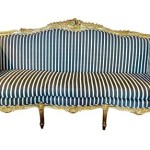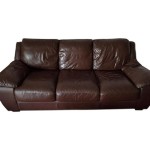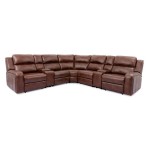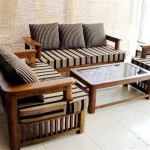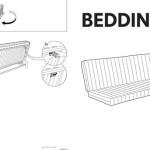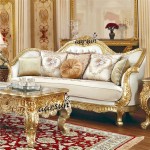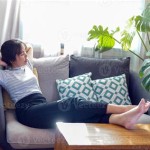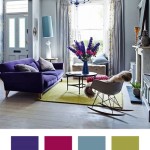Danish Style Sofa Beds: Functionality Meets Scandinavian Design
Danish style sofa beds, representative of the broader Scandinavian design movement, have gained significant popularity for their emphasis on minimalism, functionality, and aesthetic appeal. These pieces of furniture seamlessly integrate into modern living spaces, offering a practical solution for accommodating guests without compromising on style or comfort. Understanding the key characteristics, design principles, and practical considerations associated with Danish style sofa beds is crucial for making an informed purchasing decision.
The core of Danish design philosophy rests on the concept of "hygge," which translates roughly to coziness and well-being. This philosophy is reflected in the clean lines, natural materials, and comfortable forms that define Danish style furniture. Sofa beds adhering to this aesthetic typically feature a simple silhouette, often characterized by a low profile and gently sloping angles. The emphasis is on creating a welcoming and uncluttered environment, avoiding unnecessary ornamentation or excessive detailing.
The functionality of a sofa bed is inherently important, and Danish designs address this need with thoughtful engineering. The mechanisms employed for converting from sofa to bed are often designed for ease of use and durability. Modern variations frequently incorporate innovative folding or sliding mechanisms that require minimal effort to operate. This focus on practicality ensures that the transition between seating and sleeping arrangements is smooth and efficient.
Key Point 1: Defining Characteristics of Danish Design in Sofa Beds
Danish design, regardless of the specific application, prioritizes certain elements. In the context of sofa beds, these elements manifest in unique ways that define the overall aesthetic and functionality.
Material Selection: A hallmark of Danish design is the utilization of natural materials. Solid wood frames, often crafted from beech, oak, or teak, provide a sturdy and durable foundation for the sofa bed. Wood is chosen not only for its strength but also for its warm and inviting texture. Upholstery fabrics typically include natural fibers such as wool, linen, or cotton blends. These materials offer breathability, comfort, and durability, aligning with the Scandinavian commitment to sustainability and longevity. Leather options are also available, often in muted tones to complement the natural wood finishes.
Color Palette: The color schemes employed in Danish style sofa beds generally adhere to a neutral palette. White, gray, beige, and pastel shades are commonly used to create a sense of calmness and tranquility. These colors also serve as a versatile backdrop for other design elements within the room, allowing for flexible styling and customization. Pops of color may be introduced through cushions or throws, providing visual interest without disrupting the overall minimalist aesthetic. The objective is to create a harmonious and balanced environment that promotes relaxation and well-being.
Minimalist Form: Simplicity is a defining principle of Danish design. Sofa beds are characterized by clean lines, uncluttered surfaces, and a lack of excessive ornamentation. The focus is on the essential form and function of the piece, avoiding unnecessary details that could detract from the overall aesthetic. The emphasis on a minimalist form allows the sofa bed to seamlessly integrate into a variety of interior styles, from modern and contemporary to Scandinavian and transitional.
Leg Design: The legs of a Danish style sofa bed often contribute significantly to its overall aesthetic. Tapered legs, typically crafted from wood or metal, are a common feature. These legs add a sense of lightness and airiness to the design, preventing the sofa bed from appearing bulky or heavy. The legs may be angled or straight, depending on the specific design, but they always adhere to the principles of simplicity and functionality. The height of the legs also plays a role in the overall comfort of the sofa bed, allowing for easy cleaning underneath and contributing to a more spacious feel.
Seating Comfort: While aesthetics are important, comfort is never sacrificed in Danish design. Sofa beds are designed with ergonomic considerations in mind, ensuring that they provide adequate support and cushioning for both sitting and sleeping. High-density foam is commonly used in the cushions, offering a balance of support and comfort. Some models incorporate pocket springs for added support and pressure relief. The depth and angle of the seat are also carefully considered to promote proper posture and relaxation.
Key Point 2: Functionality and Conversion Mechanisms
The primary function of a sofa bed is to provide both comfortable seating and a convenient sleeping surface. The efficiency and ease of the conversion mechanism are therefore critical aspects of its design. Danish style sofa beds emphasize user-friendly conversion processes.
Click-Clack Mechanisms: This is a common and relatively simple mechanism. The sofa back is pushed forward until it clicks, then lowered to create a flat sleeping surface. This mechanism is generally durable and easy to operate, making it a popular choice for many sofa bed designs. Variations may include adjustable back positions for added comfort while sitting.
Pull-Out Mechanisms: These mechanisms typically involve a concealed bed frame that is pulled out from underneath the sofa cushions. These mechanisms often provide a more traditional bed-like experience, with a separate mattress and frame. The quality of the pull-out mechanism is crucial, ensuring smooth operation and preventing jamming or misalignment.
Folding Mechanisms: Some sofa beds utilize a folding mechanism where the back of the sofa folds down to create a flat sleeping surface. These mechanisms can be particularly space-saving, as they do not require any additional floor space for conversion. The quality of the hinges and supporting structures is essential for ensuring the longevity of the mechanism.
Storage Considerations: Many Danish style sofa beds incorporate built-in storage compartments. This can be a particularly useful feature for small apartments or rooms where space is limited. The storage compartment is typically located underneath the seat cushions and can be used to store bedding, pillows, or other items. The design of the storage compartment is usually discreet, seamlessly integrated into the overall aesthetic of the sofa bed.
Mattress Quality: The quality of the mattress is a critical factor in the overall comfort of the sofa bed. Danish style sofa beds often feature mattresses made from high-density foam or memory foam. These materials provide adequate support and contour to the body, ensuring a comfortable night's sleep. The thickness of the mattress is also important, as a thicker mattress will generally provide better support and comfort. Some models may offer the option of upgrading to a higher-quality mattress for enhanced comfort.
Key Point 3: Considerations for Purchasing and Maintenance
Selecting the right Danish style sofa bed involves careful consideration of space, lifestyle, and budget. Proper maintenance is essential for preserving its beauty and functionality for years to come.
Space Planning: Before purchasing a sofa bed, it is essential to accurately measure the available space. Consider the dimensions of the sofa in both its seating and sleeping configurations. Ensure that there is enough room to comfortably extend the sofa bed without obstructing doorways or other furniture. It is also important to consider the placement of electrical outlets and other utilities when planning the layout of the room.
Lifestyle Considerations: The frequency with which the sofa bed will be used should influence the choice of mechanism and mattress quality. If the sofa bed will be used frequently as a sleeping surface, it is advisable to invest in a higher-quality mattress and a durable conversion mechanism. Consider whether the sofa bed will be used primarily for sitting or sleeping, and choose a model that is well-suited to both purposes.
Budget Allocation: Danish style sofa beds can range in price from relatively affordable to quite expensive, depending on the materials, construction, and features. Establish a budget before beginning the shopping process and stick to it. Prioritize the features that are most important, such as mattress quality, mechanism durability, and aesthetic appeal. Consider investing in a higher-quality sofa bed that will last for many years, rather than opting for a cheaper model that may need to be replaced sooner.
Maintenance and Care: Regular cleaning and maintenance are essential for preserving the beauty and functionality of a Danish style sofa bed. Vacuum the upholstery regularly to remove dust and debris. Spot clean spills immediately with a damp cloth and a mild detergent. Avoid using harsh chemicals or abrasive cleaners, as these can damage the upholstery. Protect the sofa bed from direct sunlight, which can cause fading and discoloration. If the sofa bed has a wooden frame, dust it regularly with a soft cloth and apply a wood polish or oil as needed.
Fabric Protection: Applying a fabric protector can help to prevent stains and spills from penetrating the upholstery. This is particularly important if the sofa bed is used frequently or if there are children or pets in the home. Choose a fabric protector that is specifically designed for the type of upholstery material used on the sofa bed. Follow the manufacturer's instructions carefully when applying the fabric protector.
Mechanism Maintenance: Regularly inspect the conversion mechanism for signs of wear or damage. Lubricate the moving parts with a silicone-based lubricant to ensure smooth operation. If any parts are damaged or broken, replace them immediately. Avoid forcing the mechanism if it is not working properly, as this can cause further damage.
Professional Cleaning: Consider having the sofa bed professionally cleaned on a regular basis, especially if it is heavily used. A professional cleaner will have the expertise and equipment to safely and effectively clean the upholstery and remove stubborn stains.

Image Result For Industrial Futon Danish Design Sofa Modern Bed Comfortable

Splitback Frej Sofa Bed From Danish Innovation Living Expert

Vintage Grey Sofa Bed Denmark 1970s

Danish Minerva Sofa Bed In Teak By Peter Hvidt Orla Mølgaard Nielsen For France Daverkosen 1960s At Pamono

Mid Century Vintage Retro Sofa Bed Danish Style Reupholstered In Grey Wool Large

Midcentury Danish Sofa Bed In Coral Velvet

Midcentury Danish Sofa Bed In Coral Velvet

Wool Check Sofa Bed Mostly Danish Furniture Ottawa

Luxury Living Redefined 4 Designer Sofas By Eilersen Danish Design Authentic Furniture

Give Your Home A Facelift For Winter With Innovation Sofa Beds

